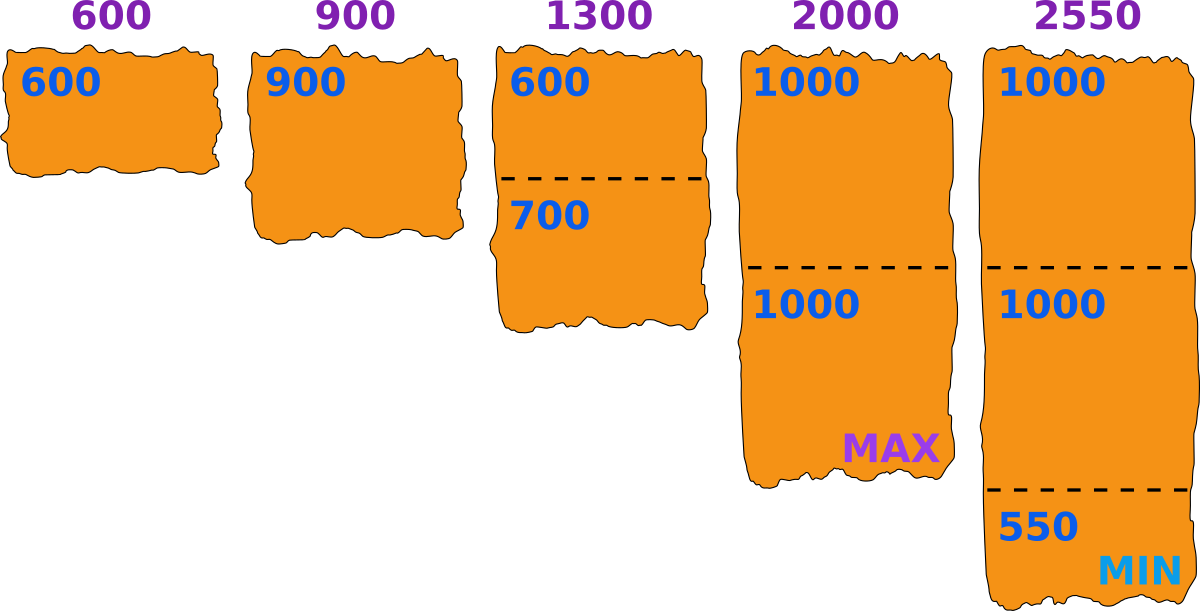| Codeforces Round 824 (Div. 2) |
|---|
| Finished |
There are $$$n$$$ pieces of tangerine peel, the $$$i$$$-th of them has size $$$a_i$$$. In one step it is possible to divide one piece of size $$$x$$$ into two pieces of positive integer sizes $$$y$$$ and $$$z$$$ so that $$$y + z = x$$$.
You want that for each pair of pieces, their sizes differ strictly less than twice. In other words, there should not be two pieces of size $$$x$$$ and $$$y$$$, such that $$$2x \le y$$$. What is the minimum possible number of steps needed to satisfy the condition?
The first line of the input contains a single integer $$$t$$$ ($$$1 \le t \le 100$$$) — the number of test cases. The description of test cases follows.
The first line of each test case contains the integer $$$n$$$ ($$$1 \le n \le 100$$$).
Then one line follows, containing $$$n$$$ integers $$$a_1 \le a_2 \le \ldots \le a_n$$$ ($$$1 \le a_i \le 10^7$$$).
For each test case, output a single line containing the minimum number of steps.
351 2 3 4 5110335600 900 1300 2000 2550
10 0 4
In the first test case, we initially have a piece of size $$$1$$$, so all final pieces must have size $$$1$$$. The total number of steps is: $$$0 + 1 + 2 + 3 + 4 = 10$$$.
In the second test case, we have just one piece, so we don't need to do anything, and the answer is $$$0$$$ steps.
In the third test case, one of the possible cut options is: $$$600,\ 900,\ (600 | 700),\ (1000 | 1000),\ (1000 | 1000 | 550)$$$. You can see this option in the picture below. The maximum piece has size $$$1000$$$, and it is less than $$$2$$$ times bigger than the minimum piece of size $$$550$$$. $$$4$$$ steps are done. We can show that it is the minimum possible number of steps.

| Name |
|---|




